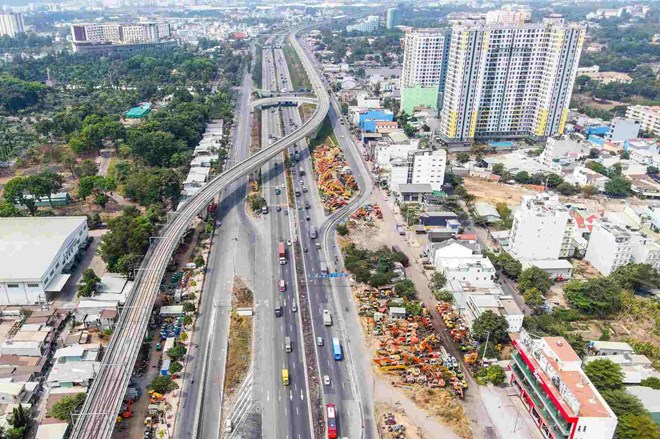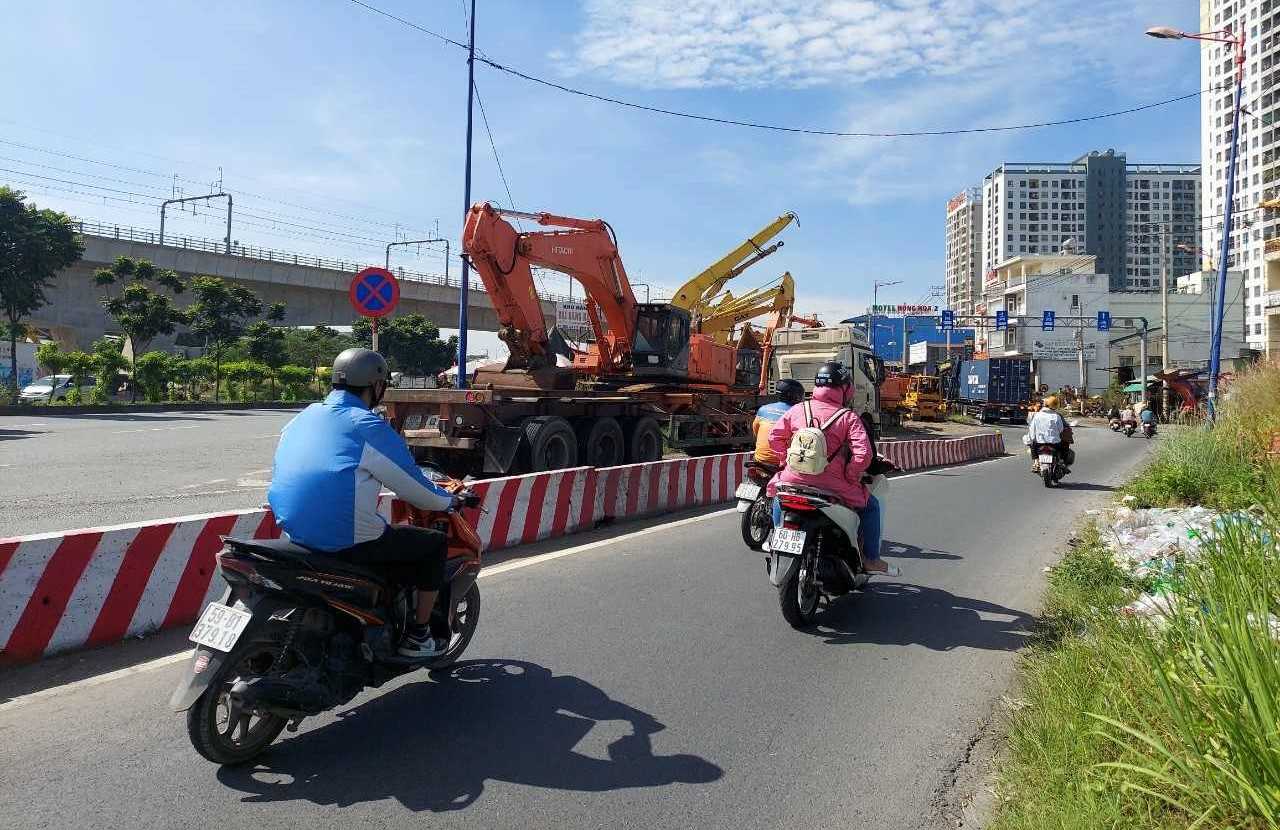The project to expand Hanoi Highway and National Highway 1 has a total length of 15.7 km, from Saigon Bridge to Tan Van intersection, and was started on April 2, 2010 under the BOT (build - operate - transfer) form.
The project is divided into 3 sections, with an expanded scale of 12-16 lanes: Section 1, from Saigon Bridge to Binh Thai intersection, is 6.2km long, 153m wide; Section 2, from Binh Thai to Tram 2 intersection, is 5.3km long, 113m wide; Section 3, from Tram 2 intersection to Tan Van, is 4.2km long, 113m wide.
According to the original plan, the project would be completed within 36 months from the handover of the site. However, up to now, sections 1 and 2 have been basically completed, while section 3 is still unfinished.
In Binh Duong province, the site clearance project is managed by the Ho Chi Minh City Traffic Construction Investment Project Management Board (Traffic Board).
The total number of affected households is 201, with an area of about 17 hectares. To date, 201 households have been inventoried, but only 55 households (about 5.5ha) have been compensated, the remaining 146 households (11.5ha) have not been resolved.

The Department of Natural Resources and Environment of Ho Chi Minh City said that on January 24, 2017, the People's Committee of Binh Duong province issued Decision No. 174/QD-UBND on approving the land compensation unit price for the remaining area of the project. The price of residential land is 20.19 million VND/m2, the price of agricultural land is 8.038 million VND/m2.
Regarding compensation costs for 146/201 remaining cases of phase 2, the Di An Town Land Fund Development Center issued document No. 445/TTPTQD dated October 15, 2019, estimated at about VND 3,079 billion, the expected compensation land price in 2020 for residential land is VND 42 million/m2, for agricultural land is VND 16.7 million/m2.
Meanwhile, the land price for the compensation plan to collect people's opinions for District 9 (now Thu Duc City, Ho Chi Minh City), Hanoi Highway is about 50 million VND/m2, for agricultural land with a coefficient of 14, equivalent to about 5.2 million VND/m2 (the unit price of agricultural land is about 10% of the unit price of residential land).
The Department of Natural Resources and Environment of Ho Chi Minh City said that there are main differences in agricultural land unit prices between the two localities.
According to the report of Binh Duong province, the land recovered for the project is mostly residential land (which can be converted to residential land), so the high unit price is appropriate compared to the residential land price to calculate compensation in the project (agricultural land price is about 25% of the residential land unit price).
The increase in land prices in Binh Duong has forced Ho Chi Minh City to balance to be able to clear the land and continue implementing the Hanoi Highway expansion project.
However, according to the Department of Natural Resources and Environment of Ho Chi Minh City, the determination of current land prices is based on market transaction information, so there is no mechanism to control land price increases but is regulated by the market.

In order to remove difficulties, the Ho Chi Minh City Department of Transport has recently proposed that the Ho Chi Minh City People's Committee assign the Ho Chi Minh City Traffic Department to proactively coordinate with relevant units to report to the Ho Chi Minh City People's Committee on difficulties and propose solutions to completely handle the issue of compensation and site clearance in Binh Duong.
At the same time, the Department of Natural Resources and Environment was assigned to preside over the work with CII Company - the project implementation unit, to review and propose solutions to the problem. The Department of Natural Resources and Environment needs to prepare working content between the leaders of the Ho Chi Minh City People's Committee and the Binh Duong Provincial People's Committee to completely resolve the compensation and site clearance work for the project.










